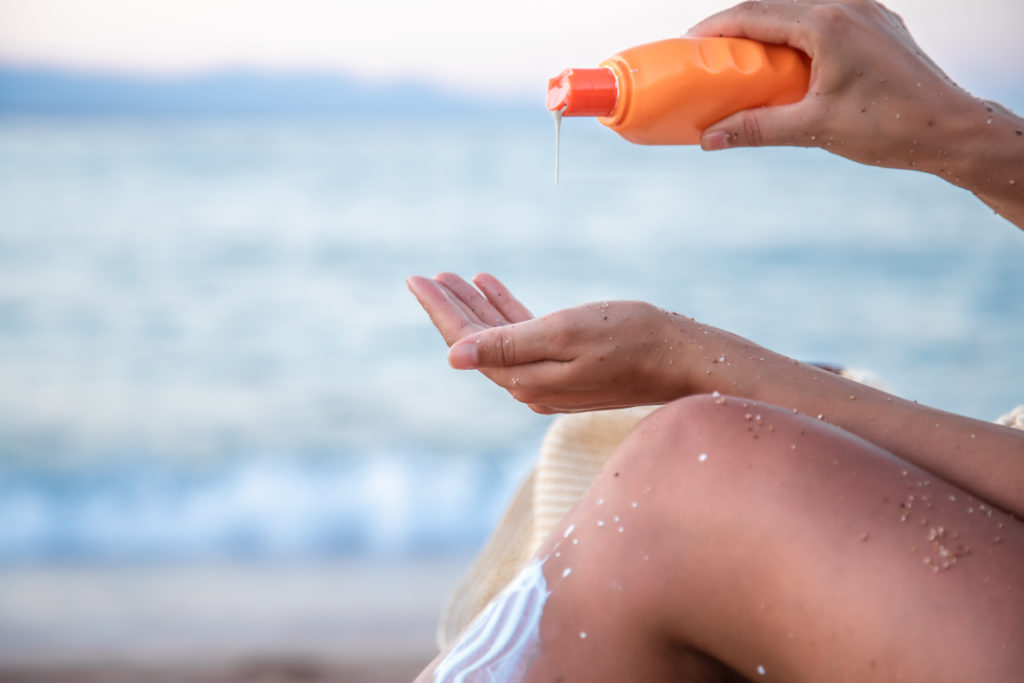Ultraviolet (UV) is a form of electromagnetic radiation produced by the sun and artificial sources such as tanning beds. Even though it can benefit people by creating vitamin D, it also poses a risk to our health because it can damage our cells and lead to eye diseases.
Remember that time your parents told you to put sunscreen on the beach to keep your skin safe? Well, let’s look at why they were right, and what effects UV radiation can have on humans.

UV Effects
Unlike x-rays, UV radiation has a low power of penetration, meaning its effects on humans are limited to the surface skin. The direct effects include pigmentation development (suntan), reddening of the skin (sunburn), and aging.
Ultraviolet sunburns can be mild, causing only tenderness and redness, or they can be severe and cause seepage of fluid, swelling, blisters, and sloughing of the other skin. In addition, some people may develop red blotchy areas or hives as an allergic reaction to sun exposure.
Excess exposure to UV radiation can also result in a painful burn of the cornea. Chronic eye exposure to UV radiation can also increase the chances of:
- Macular degeneration – The development of spots that could result in blindness
- Pterygium – Fleshy growth on the eye’s conjunctive
- Cataract – Clouding of the eye lens
UV radiation causes genetic mutations in the skin cells, which over time can lead to skin cancer. Skin cancer is the most common cancer in the United States, with one in five Americans developing skin cancer in their lifetime.
Studies have shown that people with a large number of moles and freckles are at a higher risk of developing skin cancer.
People with a light complexion who have less melanin pigment experience the damaging effects of UV radiation to a greater extent. Even though individuals with darker skin types are less likely to develop skin cancer, they should still take the necessary steps to protect their eyes and skin from overexposure to the sun.
The UVI
The UVI or ultraviolet index is a measure of the level of UV radiation. The values of the index range from zero upward, and they’re meant to help you avoid harmful exposure to UV radiation.
- 0 to 2: Low – You can safely talk outdoors with zero to minimal sun protection.
- 3 to 7: Moderate to high – When outdoors, wear protective clothing, sunglasses, and a hat, and apply SPF-15 or higher sunscreen on exposed areas,
- 8+: Very high to extreme – Wear protection, generously apply SPF, and be careful while outdoors.
Types of UV Radiation
There are three different forms of radiation, including UVA, UVB, and UVC.
- UVA rays – UVA is the longest wavelength, and it is the form of radiation that causes wrinkles, sports, and skin aging. The reason for this is that UVA rays reach deep into skin layers. This form of radiation is also linked with cancer.
- UVB rays – UVB is responsible for sunburn. Even though most UVB rays get absorbed by the ozone layer, it still manages to get through. UVB rays age your skin over time and are strongly linked with skin cancer. They can be weaker or stronger, depending on the season and time of day.
- UVC rays – UVC is the shortest wavelength, meaning the UV radiation is more harmful. Luckily, UVC rays can’t penetrate the atmosphere of the earth. So, although UVC is the most dangerous form of radiation, it cannot penetrate our skin because it is completely absorbed by the ozone layer. However, this doesn’t mean that we should ignore UVC. People that need to be concerned about UVC rays are people who work with man-made sources of UVC, such as mercury maps, welding torches, and UV sanitizing bulbs used to kill germs and bacteria.
With the AirCare app, you can monitor real-time UV index. All you need to do is click on the “Pollen/UV” button on the bottom bar of the app, and you’ll know when you need to wear sunglasses and sunscreen! ☀️





